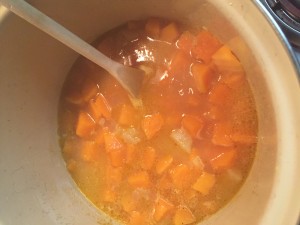With six outbreaks now associated with Chipotle since July, the burrito chain is under scrutiny from the public and food safety folks for being heavy on promises to be 20 years ahead of everyone else and light on details. A couple of weeks ago they talked about switching their tomato handling from largely an in-store process to a centralized commissary with controls.
According to AP, here are some of the other specifics:
Onions will be dipped in boiling water to kill germs before they’re chopped. Raw chicken will be marinated in re-sealable plastic bags, rather than in bowls. Cilantro will be added to freshly cooked rice so the heat gets rid of microbes in the garnish.
“When you’re given a project like this, you look at the universe of hazards,” said Mansour Samadpour, CEO of IEH Laboratories, which was hired by Chipotle to tighten its procedures.
Chipotle spokesman Chris Arnold said many of changes will be implemented in coming weeks, but that the company doesn’t expect the taste of its food to suffer. Among the tweaks the company is making:
—Cheese will now arrive in restaurants shredded.
—Ingredients like onions will be macerated with lemon or lime juice to kill germs.
—60 samples of every 2,000 pounds of steak will be tested before it’s sent to stores. A similar testing program will be implemented for chicken in coming weeks. Pork and barbacoa beef are already delivered cooked in sealed bags.
—Tomatoes, cilantro and other ingredients will be chopped in centralized locations, rather than in stores, so they can be tested. Chipotle has said in the past that tomatoes taste better when freshly diced in restaurants. After the outbreak, Chipotle co-CEO Steve Ells changed tunes: “If I’m eating a burrito that had tomatoes that were chopped in a central kitchen in the salsa or one that was chopped in house, I probably couldn’t tell the difference,” he said in an interview on CNBC last week.
Not all chopping will be moved to centralized locations. Onions, for instance, would oxidize and smell bad if they were chopped days in advance, Samadpour said. So they will remain chopped in restaurants, along with lemons, limes and jalapenos. All will now be blanched to kill germs.
These are some good steps, I’d love to see the validation data that shows onions macerated with high-acid juice will take care of pathogens. Salmonella has been shown to be pretty hardy in the ceviche-type setting (resulting in a 1-2 log reduction according to some work done by barfblog friend and podcast buddy Don Schaffner).
I’d love to see the data associated with adding-cilantro-to-hot-rice – sounds like a good idea, but what is the heat transfer like and what does it do to the pathogens?
Sealed bags vs open bowls for marination is good – but those bags still need to be opened and the juices controlled.









